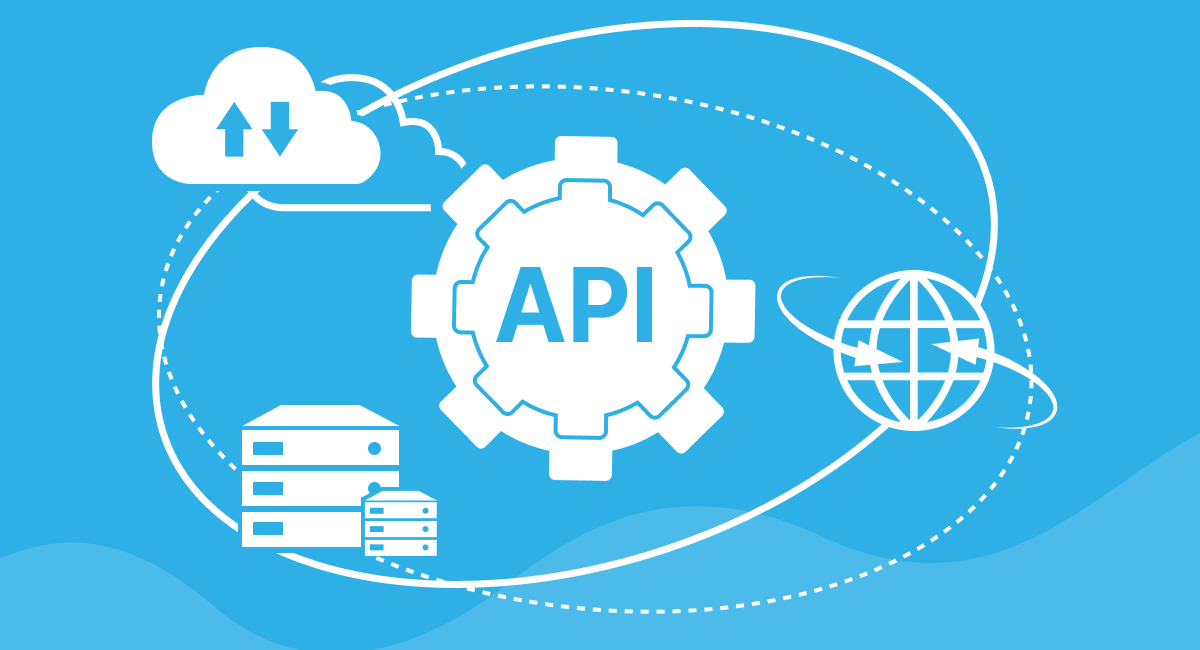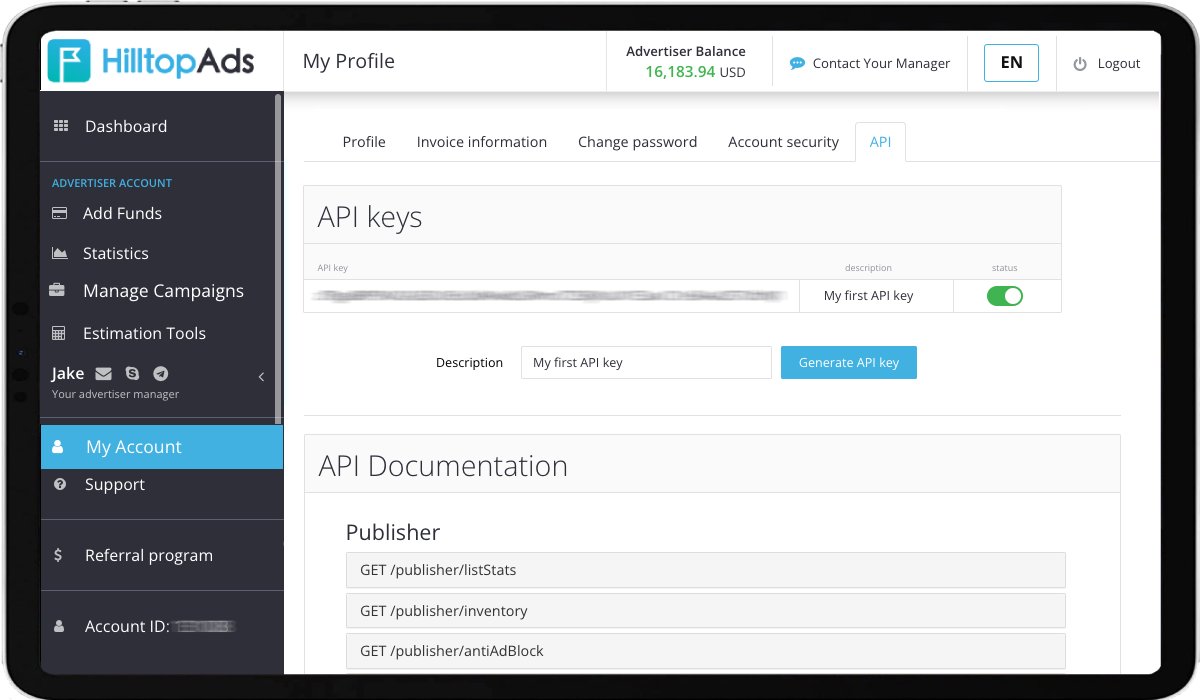Everything about ad network API and how it can alleviate your routine work

In the constantly growing digital advertising market, advertisers seek ways to measure their ad campaigns' success while maintaining user privacy. One tool that has become increasingly popular is the API, which allows advertisers to interact programmatically with advertising networks.
The advertising network API involves three key participants: the network, the advertiser, and the user.
The ads network signs ads and receives install-validation postbacks after ads result in conversions. The advertiser uses the API to interact with the network and access data related to their campaigns. And the user, whose privacy is of utmost importance, is protected by the API's design, which ensures that their personal data is not shared or exposed.
By using the API, advertisers can measure the effectiveness of their campaigns more accurately and efficiently. They can access real-time data on campaign performance, such as impressions, clicks, and conversions, and use that information to optimise their campaigns for better results.
Furthermore, it allows advertisers to maintain user privacy while still accessing valuable data. Advertisers can use the API to track and analyse user behaviour without collecting personally identifiable information, such as names or email addresses.
So what is an API?
API stands for Application Programming Interface. In simple terms, it is a set of protocols, tools, and methods that allow different software applications to communicate and interact with each other. APIs are typically used to facilitate the exchange of data and functionality between various applications, platforms, and systems.
For example, social media platforms like Facebook and Twitter provide APIs that allow developers to access and integrate their platforms into other applications or websites. This enables developers to leverage the functionality and data of these social media platforms in their own applications, such as displaying social media feeds or allowing users to log in with their social media accounts.
APIs are often used in web, mobile app, and other software development contexts. They provide a standardised way of accessing and sharing data between different systems and applications, making it easier for developers to build complex software systems and applications.
An ad network API is a set of protocols, tools, and methods that enable advertisers and publishers to interact with the network programmatically. This interaction can include creating and managing ad campaigns, accessing reporting and performance data, and even automating specific ad-related tasks. APIs are designed to provide a standardised way of accessing and sharing data between different applications and platforms. In the context of ad networks, APIs allow for seamless integration with other third-party tools, such as ad servers or demand-side platforms (DSPs).
API’s possibilities
Advertising networks can offer API with a wide range of functionality and can be used for a variety of purposes, including:
- Campaign Management: Advertisers can use APIs to create, manage, and optimise ad campaigns. This includes tasks such as setting targeting criteria, creating ad creatives, and adjusting bids.
- Performance Tracking and Reporting: It provides access to real-time performance data, allowing advertisers to monitor and optimise their campaigns in real time. This data can include metrics such as impressions, clicks, conversions, and revenue.
- Audience Targeting: Advertisers can use APIs to target specific audiences based on demographic, behavioural, or contextual criteria. This can help advertisers improve the relevance and effectiveness of their campaigns.
- Automation: APIs can be used to automate certain tasks, such as ad creation, targeting, and optimization. This can save advertisers time and resources, allowing them to focus on other aspects of their advertising strategy.
How does it work?
Ad network API tools work by providing a set of protocols, tools, and methods that enable programmatic interaction with an ads network's platform. These APIs typically use a REST (Representational State Transfer) architecture, which allows for standardised communication between different systems and applications.
Advertisers and publishers typically need to register for an API key, which provides access to the API's functionality. Once registered, advertisers can use the API to interact with the network's platform programmatically, using tools and methods such as HTTP requests and JSON (JavaScript Object Notation) data structures.
Why use an API ad network?
There are several benefits to using an ad serving API network, including:
- Streamlined Campaign Management: APIs allow advertisers to create, manage, and optimise campaigns more efficiently. With programmatic access to an advertising network's platform, advertisers can automate tasks such as ad creation, targeting, and optimization, saving them time and resources.
- Enhanced Performance Tracking and Reporting: APIs provide access to detailed performance data, allowing advertisers to monitor and optimise campaigns in real time. With this data, advertisers can make more informed decisions about their ad spend, targeting, and optimization strategies.
- Improved ROI: With faster campaign setup and more accurate performance tracking, APIs can help advertisers achieve a higher return on investment (ROI) from their advertising efforts.
- Increased Flexibility and Customization: APIs provide greater flexibility and customization. Advertisers can programmatically interact with the ad network's platform and adjust their campaigns based on real-time performance data. This level of customization enables advertisers to tailor their campaigns to specific audiences and goals, improving their overall effectiveness.
Consider this when choosing an ads network
When choosing a network that provides API, there are several factors to consider, including:
- Functionality: Different APIs offer different levels of functionality and integration with other third-party tools. It's important to choose an API that meets your specific needs and requirements.
- Documentation and Support: Good documentation and support are crucial when working with APIs. Make sure the network you choose has clear documentation and responsive support channels in case you encounter any issues or challenges.
- Ease of Use: APIs can vary in their level of complexity and ease of use. Look for ones that are intuitive and easy to integrate with your existing systems and workflows.
- Pricing: Advertising networks may have different pricing models, such as pay-per-use or subscription-based models. Make sure to understand the pricing structure and associated costs before making a choice.
- Security: APIs involve the exchange of sensitive data, such as campaign and performance data. It's important to choose a network that prioritises security and offers robust data encryption and protection measures.
APIs for publishers and advertisers in HilltopAds
Our network has developed a large list of APIs for our customers to simplify their work.
For publishers they are:
- Statistics.
- Inventory. Returns a list of publisher's sites and zones.
- Anti-ad block. Returns invocation code for specified zone or subId. To prevent ad blocking, this method may return a slightly different code each time, so it is recommended to get a new code every 5 minutes. This code differs from the code you get from a web interface and performs better if you recache it frequently.
- Balance.
For advertisers they are:
- Statistics.
- Start campaign. Turns campaign status to "on". Please, keep in mind that traffic will start only after the campaign is approved by the moderator. The current approval state will be indicated in the response.
- Stop campaign. Turns campaign status to "off". This will stop traffic, but some inertia (up to 10 minutes) may take place.
- Archive campaign.
- Unarchive campaign.
- Add to Blacklist/Set Blacklist. Stops getting traffic from specified sources. Please, keep in mind that some inertia (up to 1 hour) may occur.
- Remove from Blacklist. Resume getting traffic from specified source if it was previously blacklisted. This action just cancels source blacklisting. Please, keep in mind that some inertia (up to 1 hour) may occur.
- Clear campaign Blacklist.
- Add to Whitelist/Set Whitelist. Starts getting traffic from a specified source. Please, keep in mind that some inertia (up to 1 hour) may occur.
- Remove from Whitelist. Stops getting traffic from a specified source if it was previously whitelisted. This action just cancels source whitelisting. Please, keep in mind that some inertia (up to 1 hour) may occur.
- Clear campaign Whitelist.
- Set bid. Set up the price of action for a campaign of CPA type, price of click for a campaign of CPC type, or price of 1000 impressions for a campaign of CPM type.
- Set destination URL. Changes final destination URL for traffic. Please, keep in mind that this action may require moderation. During the moderation process, traffic will be sent to the previous destination URL.
- Replace domain.
- Inventory. Returns a list of advertisers' campaigns and ads.
- Campaign Blacklist. The list of zones added to the blacklist.
- Campaign Whitelist. The list of zones added to the whitelist.
- Balance.

Overall, the API is a powerful tool that enables advertisers to measure campaign success, optimise ad performance, and maintain user privacy. APIs offer a range of benefits, from streamlined campaign management to enhanced performance tracking and reporting. By providing programmatic access to an ad network's platform, advertisers and publishers can improve the efficiency and effectiveness of their advertising efforts.
With the right API in place, advertisers and publishers can achieve greater flexibility, customization, and ROI from their advertising efforts.
In case of any questions you can always contact your ad manager API assistance. Our support team will help you set up any APIs and provide even more efficient cooperation with HilltopAds.

